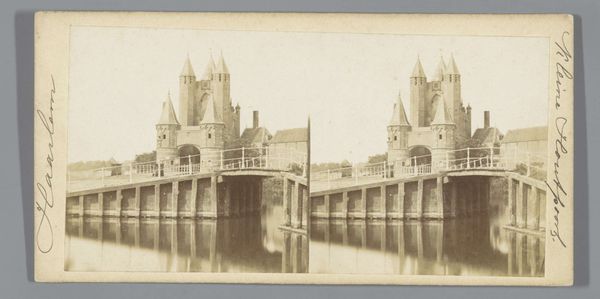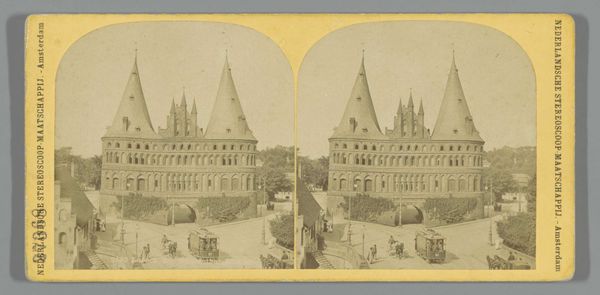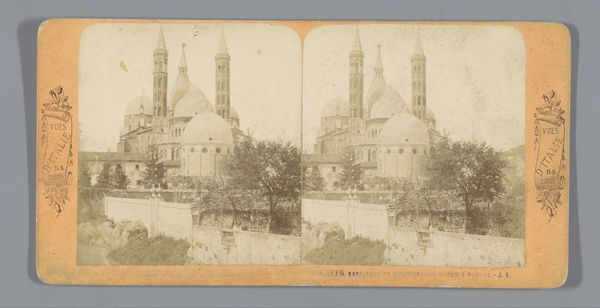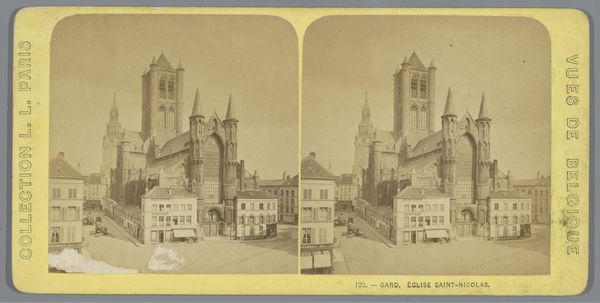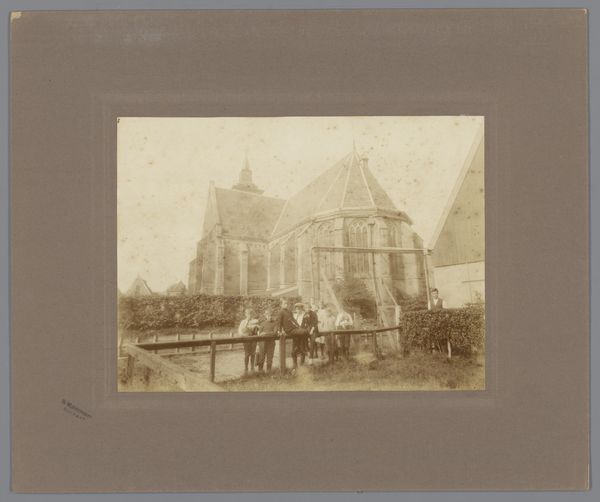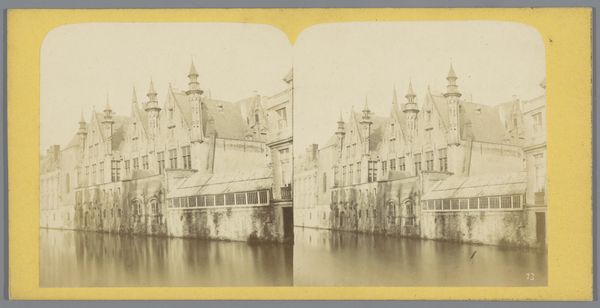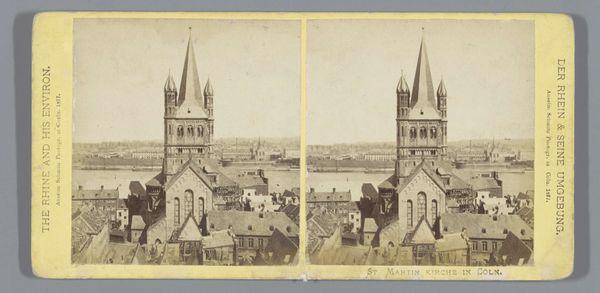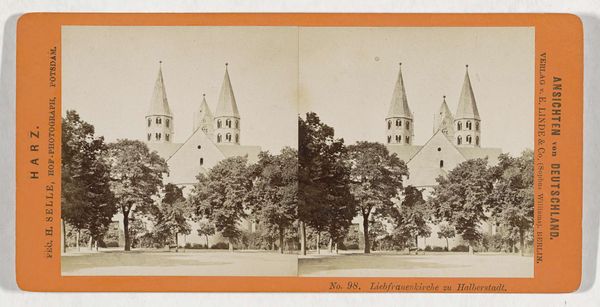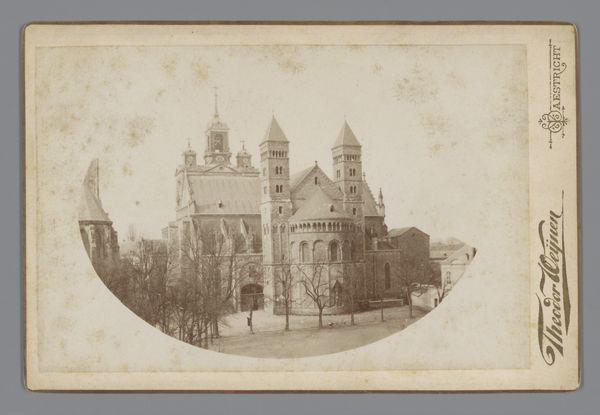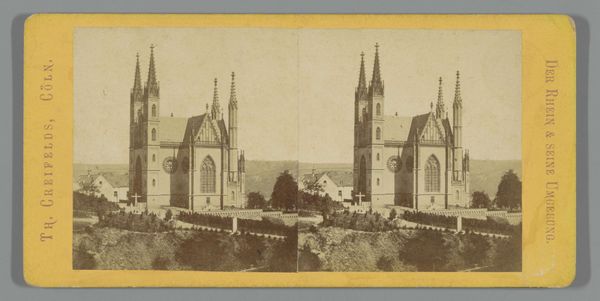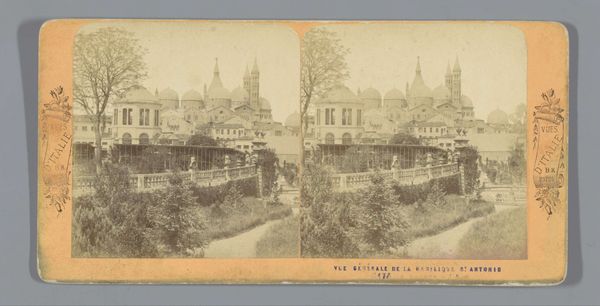
Dimensions: height 87 mm, width 178 mm
Copyright: Rijks Museum: Open Domain
This stereograph of the Amsterdamse Poort in Haarlem was made by Jules Hippolyte Quéval using photography, a process which was still relatively new at the time. The image is a product of chemical reactions on a treated glass plate, capturing a scene that speaks to the power and development of urban life. Photography’s rise was intertwined with industrialization and capitalism, providing a means to document and disseminate images widely. The Amsterdamse Poort, as captured here, is more than just a building; it is a symbol of Haarlem's history, trade, and the flow of people and goods. The stereographic format itself encouraged a sense of depth and realism, aligning with photography's aim to capture the world as it appeared. This approachability democratized art, making it more accessible, and challenging traditional forms of representation. In essence, this photograph is not just a depiction of a place, but a product of its time, reflecting the changing social and economic landscape, and photography's role within it.
Comments
No comments
Be the first to comment and join the conversation on the ultimate creative platform.

